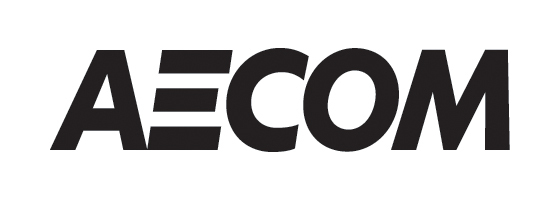
Leveraging PFMA to Perform SQRA
- Registration Closed
Despite the criticism that Potential Failure Mode Analysis (PFMA) has received following the Oroville Dam spillway incident, it has been viewed as a standard of care for dam safety evaluations in the U.S., and with some possible improvements to be more expansive, is expected to be so into the future. Many PFMA’s have been performed for state- and federally-regulated dams, and as a result of that investment, considerable knowledge has been obtained about vulnerabilities associated with specific dams. As the federal dam owners have embraced risk assessment as the next step in ensuring that dam safety risks are properly evaluated and managed, it is expected that private and state dam owners will benefit from following suit. Indeed, the Federal Energy Regulatory Commission (FERC) has recently adopted Risk Informed Decision Making (RIDM) as part of their engineering guidelines. The intent of this training is to leverage and improve on the significant investment that has already been made in performing PFMA’s, and use this information to perform semi-quantitative risk assessments (SQRA) for individual dams or dam portfolios. These assessments can then be used as a screening tool to identify PFM’s and overall risks which are not likely to meet Tolerable Risk Guidelines (TRG) based on life safety, and as a prioritization tool for reducing risk, performing additional investigations or studies, or performing quantitative risk assessments. A simplified method for categorizing additional consequences such as those incurred at Oroville is also presented in this training.
Eligible for 22 PDHs
Target Audience
The target audience for this training is dam owners and regulators who are familiar with the PFMA process, and are wanting to move these types of evaluations into the risk arena. This would include FERC licensees and their consultants; private, municipal, and state dam owners; and state and federal dam safety regulators.
Brought to you in part by

John W. France, PE, D.GE, D.WRE, M. ASCE
Managing Member
JWF Consulting LLC
Mr. France has more than 40 years of experience in engineering consulting and design. Most of Mr. France’s technical work for the past 36 years has focused on dam engineering, and he has been involved in dam safety risk analysis for more than 20 years. His risk analysis work has included serving as a facilitator or subject matter expert on semi-quantitative risk analyses (SQRAs) and full quantitative risk analyses (QRAs) for such clients as the New Mexico OSE, the U.S. Army Corps of Engineers (USACE), the U.S. Department of the Interior, Bureau of Reclamation Reclamation), the U.S. Fish and Wildlife Service, Denver Water, the Colorado Division of Parks and Wildlife, and Aqua Ohio. Mr. France has also completed assignments reviewing risk analyses completed by the USACE and Reclamation.
His experience in dam safety risk analysis led to his selection as a member of a four-person team that developed a three-day SQRA course for USSD, presented for the first time in October 2019. In addition to his risk analysis work, he has served on senior technical review panels/boards for the USACE, Reclamation, BC Hydro, Brookfield Renewable Energy, and the Lower Colorado River Authority. Mr. France has developed a reputation as one of the leading practitioners in dam engineering and dam safety, which resulted in his selection to lead the six-person team charged with completing a forensic investigation of the 2017 Oroville Dam spillway incident. He regularly publishes papers and makes presentations for conferences of ASDSO, USSD, and ASCE, and he has twice received the prestigious President's Award from ASDSO for his contributions to dam safety. He also regularly lectures at courses on dam safety topics.
Gregg A Scott, P.E., F. ASCE
Scott Consulting, LLC
Mr. Scott received his B.S. and M.S. degrees in Civil Engineering from the University of Colorado, Boulder. He started his career with the Bureau of Reclamation in 1976, where he worked for 34 years before joining the U.S. Army Corps of Engineers Risk Management Center as Lead Civil Engineer, where he worked through 2018. He has been involved with design, analysis, and construction of dams and dam safety projects, as well as the development and application of potential failure mode analysis and risk analysis for dam safety. He served on several review panels for Bureau of Reclamation and Corps of Engineers dam construction and dam safety projects. He has authored over 35 technical papers in journals and conference proceedings related to dam safety and dam engineering. He is now retired from Federal service, but continues to consult on a limited basis.
Bill Fiedler, P.E.
Senior Technical Advisor
HDR
Bill has 42 years’ experience in hydraulic and structural engineering designs for concrete dams and appurtenant structures, with the Bureau of Reclamation. While with Reclamation, he served as a technical specialist and design team leader for numerous water resource projects. In the later part of his career, he served as a member of Reclamation’s three-person Risk Advisory Team, which was responsible for developing additional risk analysis methodologies and providing training for Reclamation.
staff. Bill has particular expertise in concrete dam and spillway modifications, including: project planning and design coordination; analysis and design of structural modifications; review of design drawings and specifications; construction support; and risk analysis methodologies and facilitation. He has written numerous papers focused on dam safety evaluations and dam safety modifications. He was a lead author on a Reclamation manual focused on drains for dams and on a FEMA manual focused on flood overtopping protection for dams. For the past two years, he has worked as a consultant in the role of senior technical advisor.

Mel Schaefer, Ph.D. P.E.
MGS Engineering Consultants, Inc.
Mel Schaefer is a Civil Engineer with over 35 years of experience in dam safety engineering specializing in analyzes of extreme storms and floods for assessing the hydrologic adequacy of dams and spillways. He began his career as a staff hydrologist with the Washington State Dam Safety Program and became Head of the State Dam Safety Program in 1990 where he managed a group of hydrologic, geotechnical and structural engineers. During his 7-year tenure as head of the Dam Safety Program, he developed the risk-based design/analysis methods and performance standards and regulations for dam safety that are in-use today. He was involved in the inspection, flood analyses and remediation of over 100 dams while with the Dam Safety Program.
In 1997, he started a private consulting firm, MGS Engineering Consultants Inc. which specializes in surface water hydrology, particularly probabilistic and risk applications of extreme precipitation and floods. Over the 20-years in private practice, he has conducted probabilistic flood analyses for use in risk analyses for over 40-dams for BC Hydro, US Bureau of Reclamation, US Army Corps of Engineers, Southern California Edison, and the Tennessee Valley Authority including notable projects such as Mica Dam on the Upper Columbia River BC, Folsom Dam on the American River CA, and Mammoth Pool Dam on the San Joaquin River CA. He has conducted large-scale regional precipitation-frequency (PF) studies for the province of British Columbia; the states of Washington and Oregon; a seven State area surrounding the Tennessee River valley; the States of Colorado and New Mexico; central Texas and New Brunswick and States in New England. He has pioneered methods for numerous elements for conducting hydrologic risk analysis including regional PF analysis (SWT climate region method); storm transposition by the OTF and ESTP methods; stochastic generation of watershed PF relationships for synoptic scale mid-latitude cyclones, tropical storms, and remnants, and mesoscale convective storms; and uncertainty analysis.
He is the lead developer for the Stochastic Event Flood Model (SEFM) for computing probabilistic flood loadings and hydrologic hazard curves and L-RAP software for conducting regional precipitation frequency analysis. Both SEFM and L-RAP are commercial software products. He routinely serves on the FERC Board of Consultants and Peer Review teams for review of site-specific PMP and PMF studies and for applications of hydrologic risk.